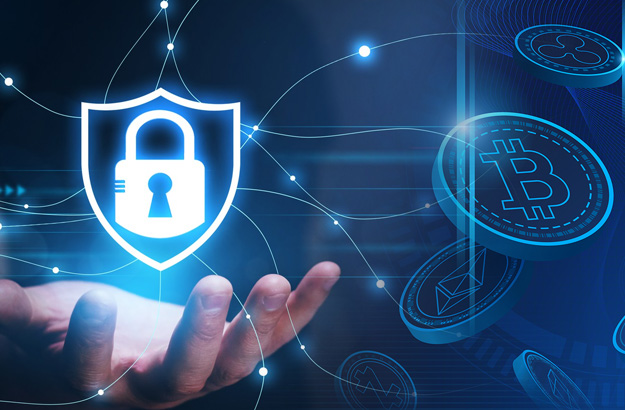Understanding Multi-Signature Wallets: A Comprehensive Guide

In the realm of cryptocurrency security, multi-signature wallets stand out as one of the most advanced and reliable tools available.
However, despite their potential to significantly enhance the security of digital assets, many investors remain unaware of how multi-signature, or multisig, wallets operate.
This lack of understanding often leads to missed opportunities for bolstering security measures in cryptocurrency storage.
What is a Multi-Signature Wallet?
A multi-signature wallet, also known as a multisig wallet, fundamentally changes the landscape of cryptocurrency storage by introducing a requirement for multiple signatures to authorize transactions.
Unlike traditional wallets that rely on a single private key, multisig wallets distribute transaction validation among several private keys, each associated with a distinct entity.
The workflow of a multisig wallet remains consistent regardless of the number of signers involved.
Any party associated with the wallet can initiate a transaction using their private key from their own self-custody wallet. However, the transaction remains pending until a predefined threshold of keys validates it.
In an N-of-N setup, all signatories must validate a transaction for it to proceed, whereas an N-of-M setup requires a subset of signers to approve it.
Proper distribution of multisig private key access among distinct entities is crucial to prevent a single point of failure.
Advantages of Multi-Signature Wallets
Enhanced Security
Multi-signature wallets offer unparalleled security by eliminating the vulnerability associated with a single private key.
The requirement for multiple signatures significantly raises the bar for malicious actors attempting to compromise the wallet.
Even in the event of a breach, attackers must acquire multiple private keys to access funds, making it a formidable deterrent against theft.
Ideal for Corporate Settings
In corporate environments, where accountability and risk mitigation are paramount, multi-signature wallets shine.
Entities like decentralized autonomous organizations (DAOs) can distribute wallet access among contributing members, ensuring collective oversight over fund transfers and smart contract upgrades.
This decentralized approach minimizes the risk of internal collusion and enhances transparency within the organization.
Versatile Setup Options
Multi-signature wallets offer flexibility in their configuration, catering to diverse user needs.
Whether it's a 1-of-2 setup for personal use or a 3-of-5 setup for corporate governance, users can tailor the wallet to suit their specific requirements.
Additionally, the choice between hosted and unhosted setups allows users to strike a balance between convenience and security based on their preferences.
Types of Multi-Signature Wallets
- 1-of-2 Signatures: This basic setup suits scenarios where trust is established between two parties, such as small businesses or personal backup solutions.
- 2-of-3 Signatures: Ideal for escrow transactions, this setup requires two out of three signers to validate a transaction, providing an additional layer of security.
- 3-of-5 Signatures: Offering robust governance capabilities, this setup mandates the approval of a majority of signers, making it suitable for corporate structures.
- Hosted vs. Unhosted: Hosted multisig wallets, provided by platforms like Coinbase Custody, offer institutional-grade security, while unhosted wallets provide users with full control over their private keys.
How To Make a Multisig Wallet
Every multisig wallet, such as Gnosis Safe, has it's own step necessary to set one up.
However, many of them follow the same fundamental steps.
To create a multi-signature (multisig) wallet, follow these steps:
- Choose a Suitable Platform: Select a cryptocurrency platform or wallet service that supports multi-signature functionality. Examples include PulseChain Safe, BitGo, Electrum, and Coinb.in.
- Set Up the Wallet: Create a new wallet account or access the multisig feature within your existing wallet interface.
- Specify the Signers: Determine the number of signers required for each transaction and identify the individuals or entities who will hold the private keys. Ensure that each signer has a secure and reliable method of managing their private key.
- Generate Public Keys: Generate public keys for each signer involved in the multisig arrangement. These public keys will be used to verify the signatures during transaction validation.
- Combine Public Keys: Combine the public keys to create a multisig address. The specific method for combining public keys depends on the chosen wallet platform.
- Set Signature Threshold: Determine the threshold for the number of signatures required to authorize transactions. For example, a 2-of-3 multisig wallet requires two out of three signers to validate a transaction.
- Initiate Transactions: To initiate a transaction, create a transaction proposal within the multisig wallet interface. Input the recipient address, amount, and any other relevant details.
- Sign Transactions: Each designated signer must sign the transaction using their respective private key. The transaction remains pending until the required number of signatures is obtained.
- Broadcast Transaction: Once the required number of signatures is obtained, the transaction can be broadcast to the network for verification and inclusion in the blockchain.
- Monitor Wallet Activity: Regularly monitor the multisig wallet for incoming and outgoing transactions. Ensure that all signers remain vigilant and promptly approve legitimate transactions.
Conclusion
Multi-signature wallets represent a cornerstone of modern cryptocurrency security, offering enhanced protection against theft and unauthorized transactions.
By understanding the intricacies of multisig technology and leveraging its versatile capabilities, investors can safeguard their digital assets with confidence.
As the cryptocurrency landscape continues to evolve, embracing multisig wallets emerges as a prudent strategy for ensuring the long-term security of valuable assets.
Join The Leading Crypto Channel
JOINDisclaimer:Please note that nothing on this website constitutes financial advice. Whilst every effort has been made to ensure that the information provided on this website is accurate, individuals must not rely on this information to make a financial or investment decision. Before making any decision, we strongly recommend you consult a qualified professional who should take into account your specific investment objectives, financial situation and individual needs.

Max
Max is a European based crypto specialist, marketer, and all-around writer. He brings an original and practical approach for timeless blockchain knowledge such as: in-depth guides on crypto 101, blockchain analysis, dApp reviews, and DeFi risk management. Max also wrote for news outlets, saas entrepreneurs, crypto exchanges, fintech B2B agencies, Metaverse game studios, trading coaches, and Web3 leaders like Enjin.

Development
Knowledge
Subscribe To Newsletter
Stay up-to-date with all the latest news about
Liquid Loans, Fetch Oracle and more.
Copyright © 2024 Crave Management.
All Rights Reserved.

The LL Librarian
Your Genius Liquid Loans Knowledge Assistant




